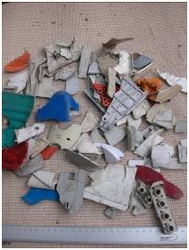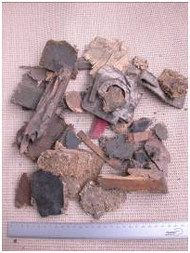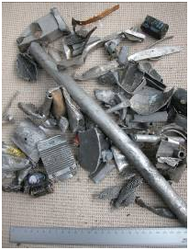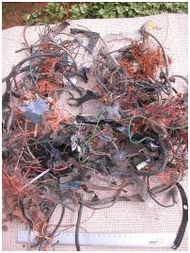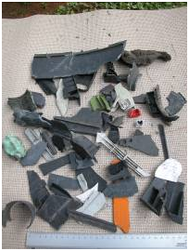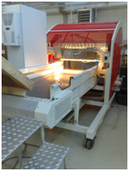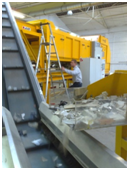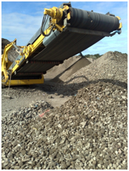Demonstration activities
The following demonstrations have been (partly) performed, evaluated and documented or are planned:
- Smart size reduction of tv's and monitors
- Polymer type sensor sorting with Near Infra Red
- Polymer sensor sorting of flame retardant containing polymers
- Recovery of WEEE metals from incinerator bottom ashes (secondary processing after scalp) with sensor sorting and dedicated eddy current sorting for fine particles
- Recovery of metals from crushed printed circuit boards with magfluid technology
- Separation of printed circuit board particles from a polymer mixture with a combination of sensors
- Advanced recovery of fine WEEE metals from bottom ashes (method confidential)
- A low energy size reduction method with better liberation and separation perspectives
- Fine precious metals recovery from printed circuit boards
The work accompanied with these demonstrations consists of the selection of samples, the selection of separation equipment, the preparation of the demonstration, the evaluation of the results and reporting.
Composition of WEEE
The composition of WEEE is complex. The next photo's give an impression of this complexity. The five major components are:
- Ferrous and non-ferrous metals
- Grey, black and coloured polymers
- Printed circuit boards
- Copper and aluminium wiring
- Wood
Demonstration activities
In cooperation with the following companies demonstrations have been organized:
RTT-Unisort in Zittau. www.rtt-steinert.com. This company assisted us to find solutions for polymer separation with their NIR (Near Infra Red) sensor sorting equipment. Zittau is a nice little town in Germany near the border of Poland and Czech Republic.
The demonstration consisted of the separation of various plastics from a mixed stream of polymers from WEEE.
REDWAVE in Gleisdorf (Austria). www.redwave.at. This company assisted us with the separation of several large quantities of mixed plastics from WEEE. The mixtures were complex in composition and consisted of large and small pieces with a variety of other materials like metals, wires and printed circuits. Larger plastic pieces are handled without problems. REDWAVE is the manufacturer of a variety of separation equipment based on sensor sorting for minerals, waste materials and glass.
Steinert in Cologne. www.steinert.de. At the laboratories of Steinert in Cologne the project was able to conduct a large test and demonstration with their x-ray sensor sorter. This sorter is specifically suitable for the separation of polymers containing flame retardant materials. The polymer mixture tested consisted mainly of black polymers from WEEE. The separation was successful.
IMMARK France in Beaucaire (France). www.immark.fr At IMMARK – France in Beaucaire the project REWARD has conducted a large test in size reduction and separation of WEEE. IMMARK – France is a large company collecting WEEE from the South of France. Their facility is sorting WEEE before processing with a special size reduction method. This method consists of a rotating drum with a screen and magnetic separation. The test consisted of 2 dozen tons of collected and sorted WEEE material. The separated fractions after magnetic separation and screening were subjected to other sorting tests, e.g. at the facilities of BRGM in Orleans and other manufacturers of sensor sorting equipment. The special features of the size reduction method is the mild reduction in size, this opposed to traditional shredding.
Dolphin Metal Separation in Barneveld www.dolphin-metal.nl. Dophin is processing bottom ashes (from household waste incinerators). They scavenge old ashes for the metal content. Ashes are processed with a standard separation sequence of magnetic separation and often also eddy current separation. The remaining ashes are stored or used as road material. These ashes often contain non-magnetic and non-conductive metals or metals too small to be captured. Dolphin is using advanced sensor sorting equipment and improved eddy current separators for fine particles to recover the left metals.
In the final year the project REWARD (end date August 2012) will be busy with the recycling of LCDs, more specific of the plastic fraction. This will involve an array of separation and size reduction technologies.






